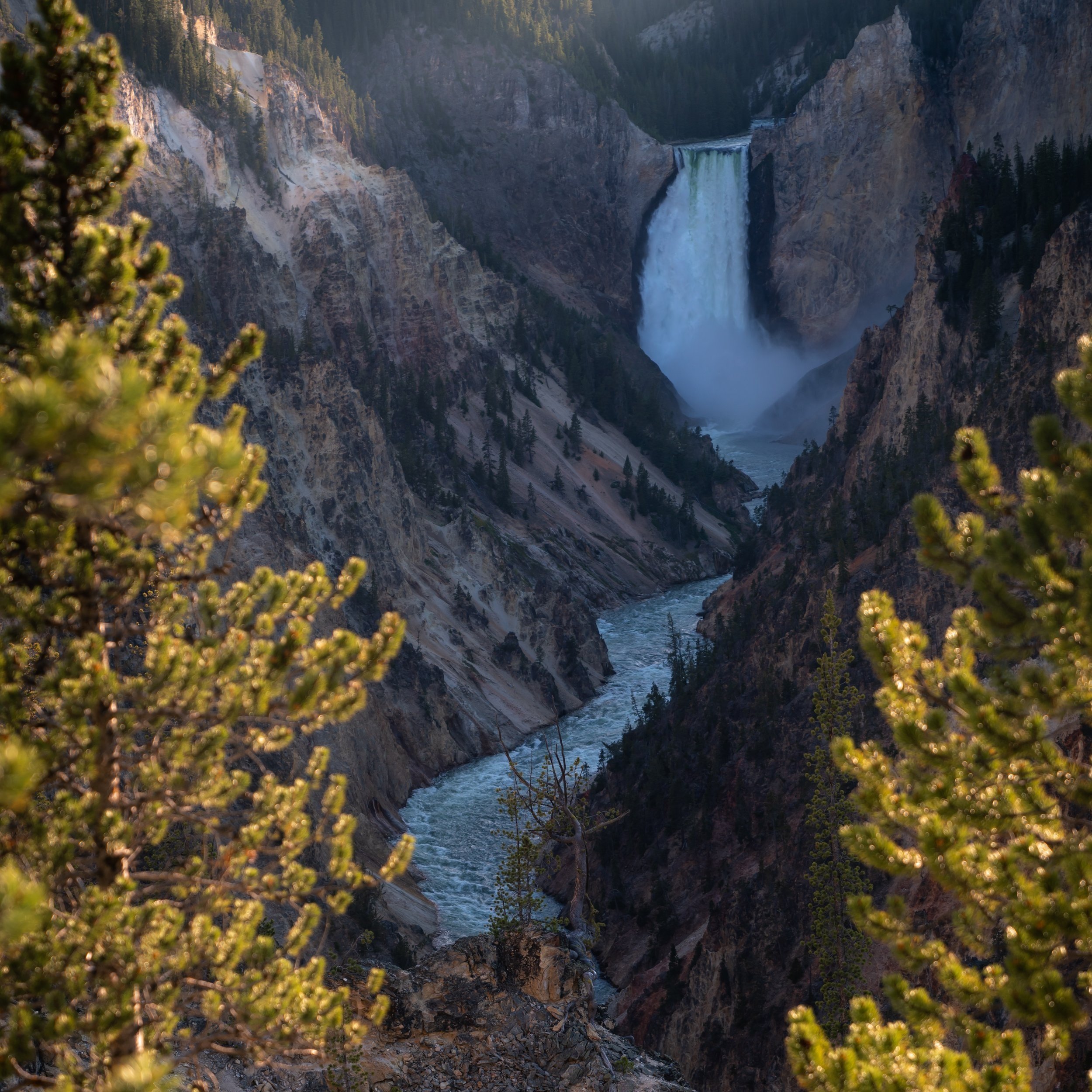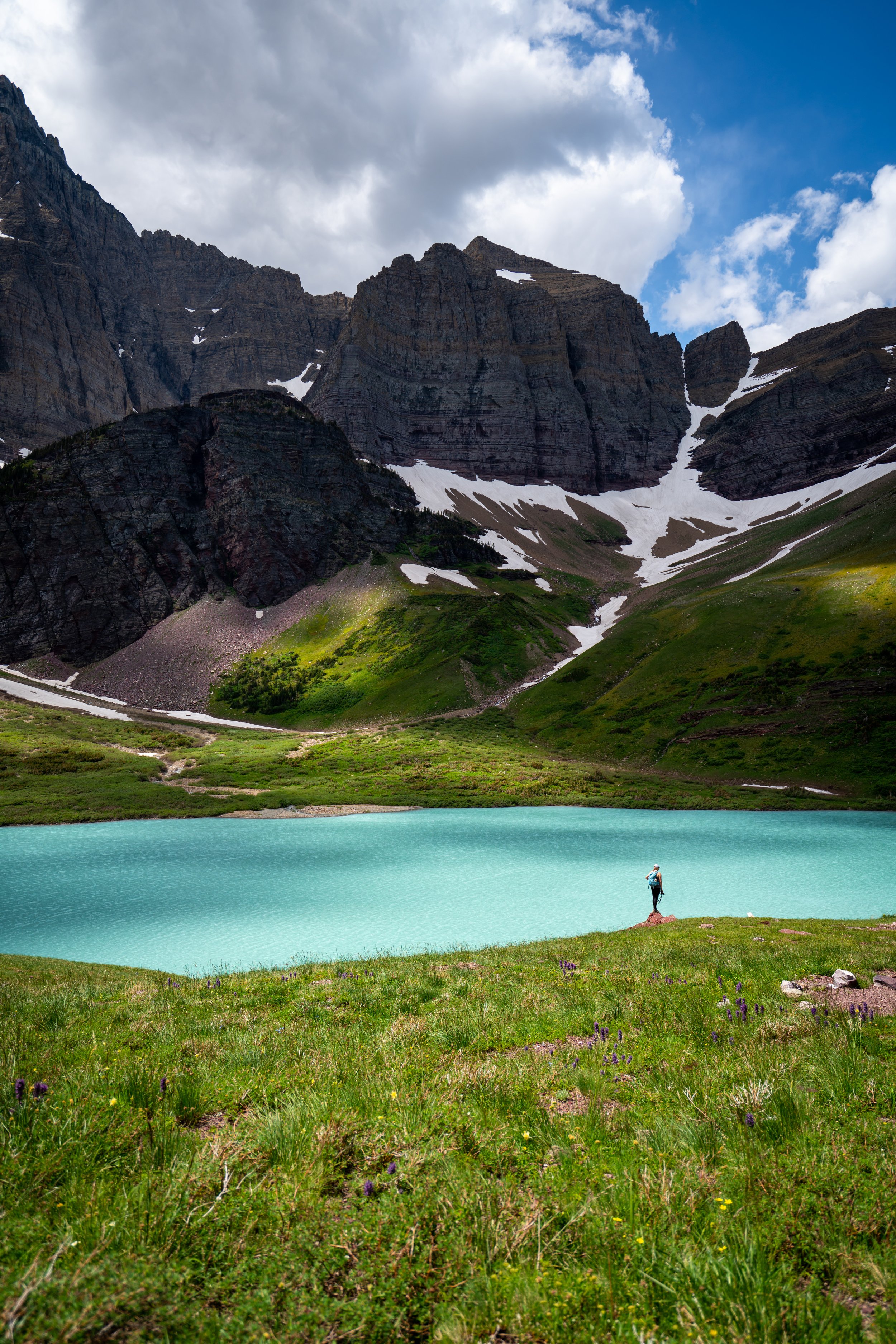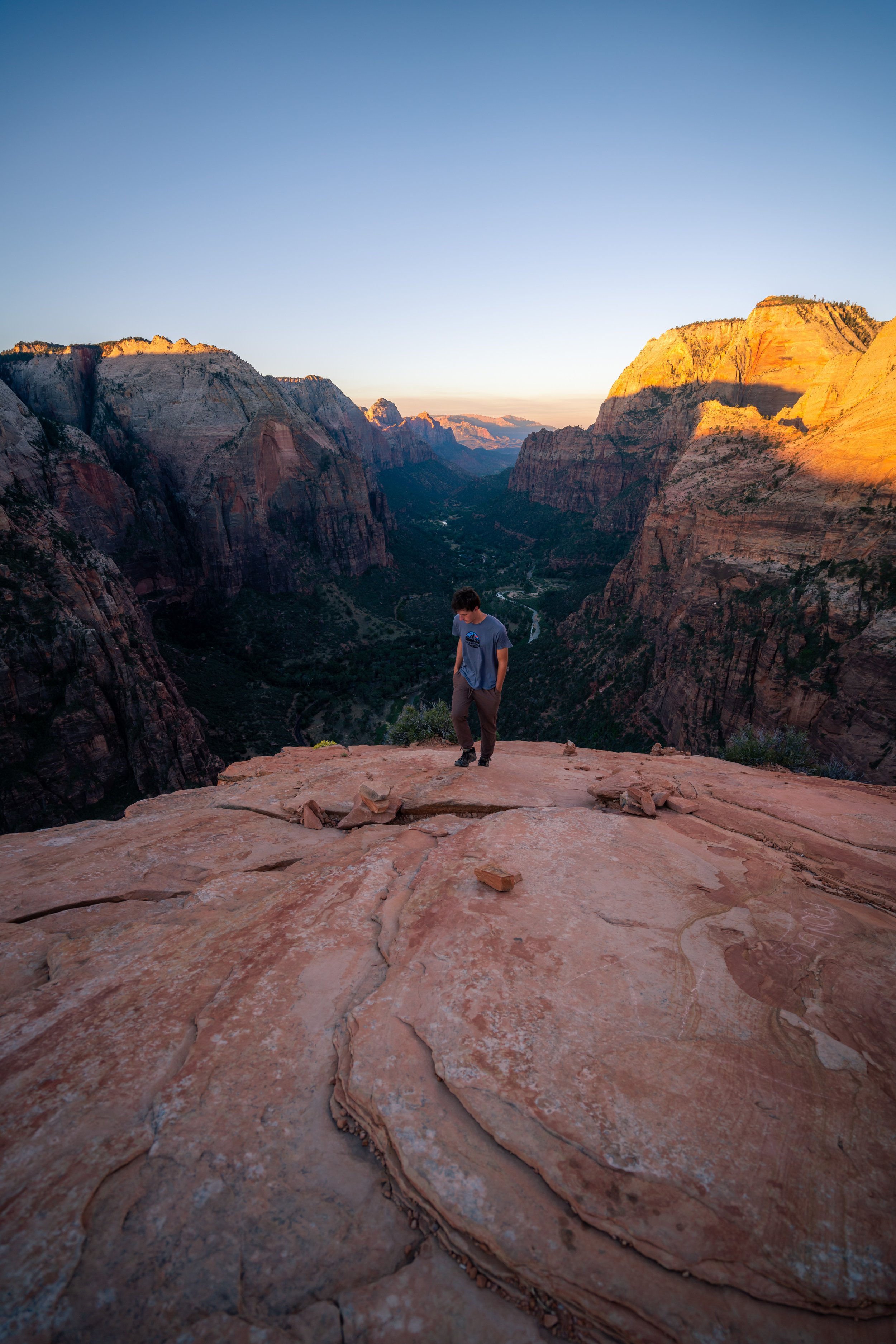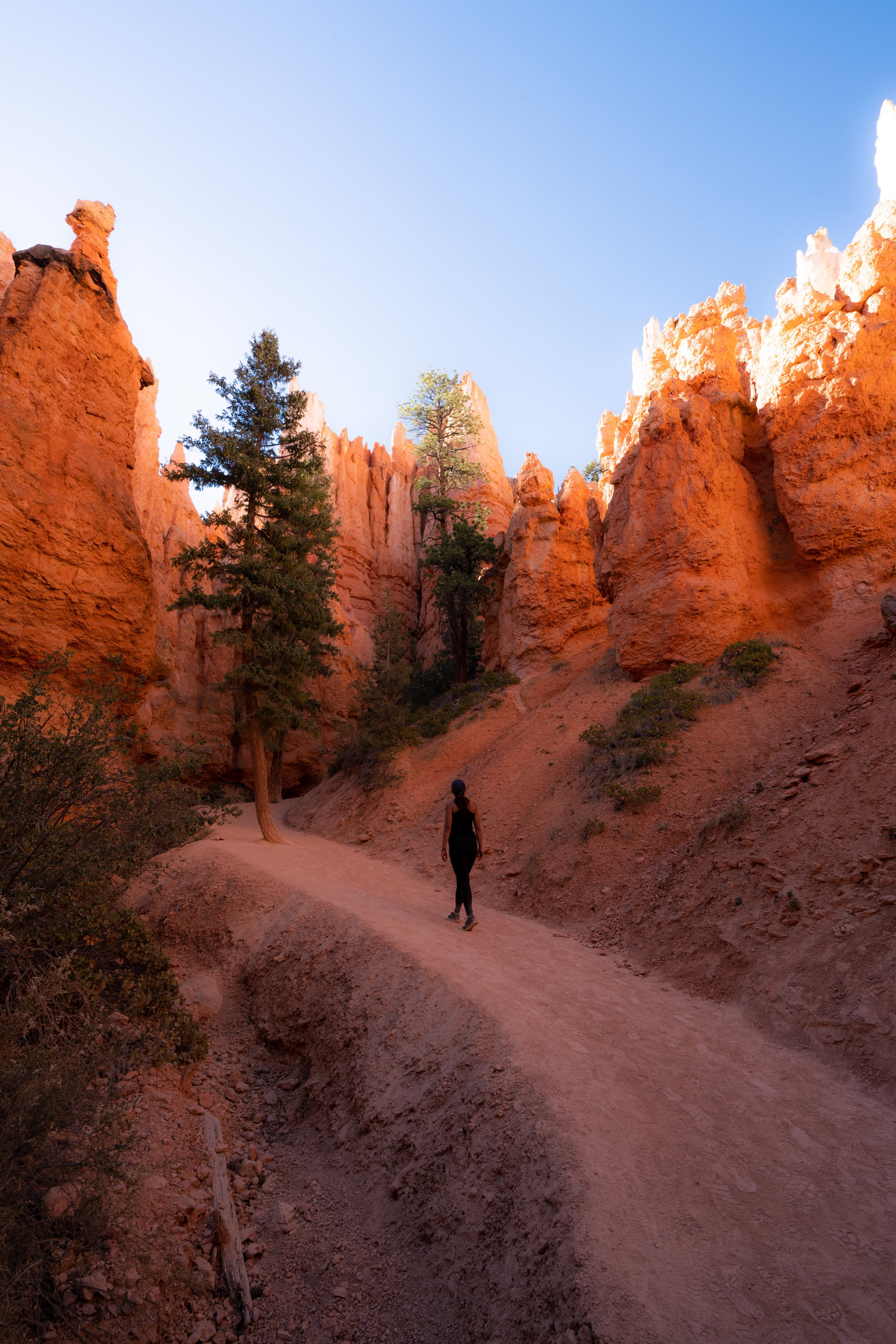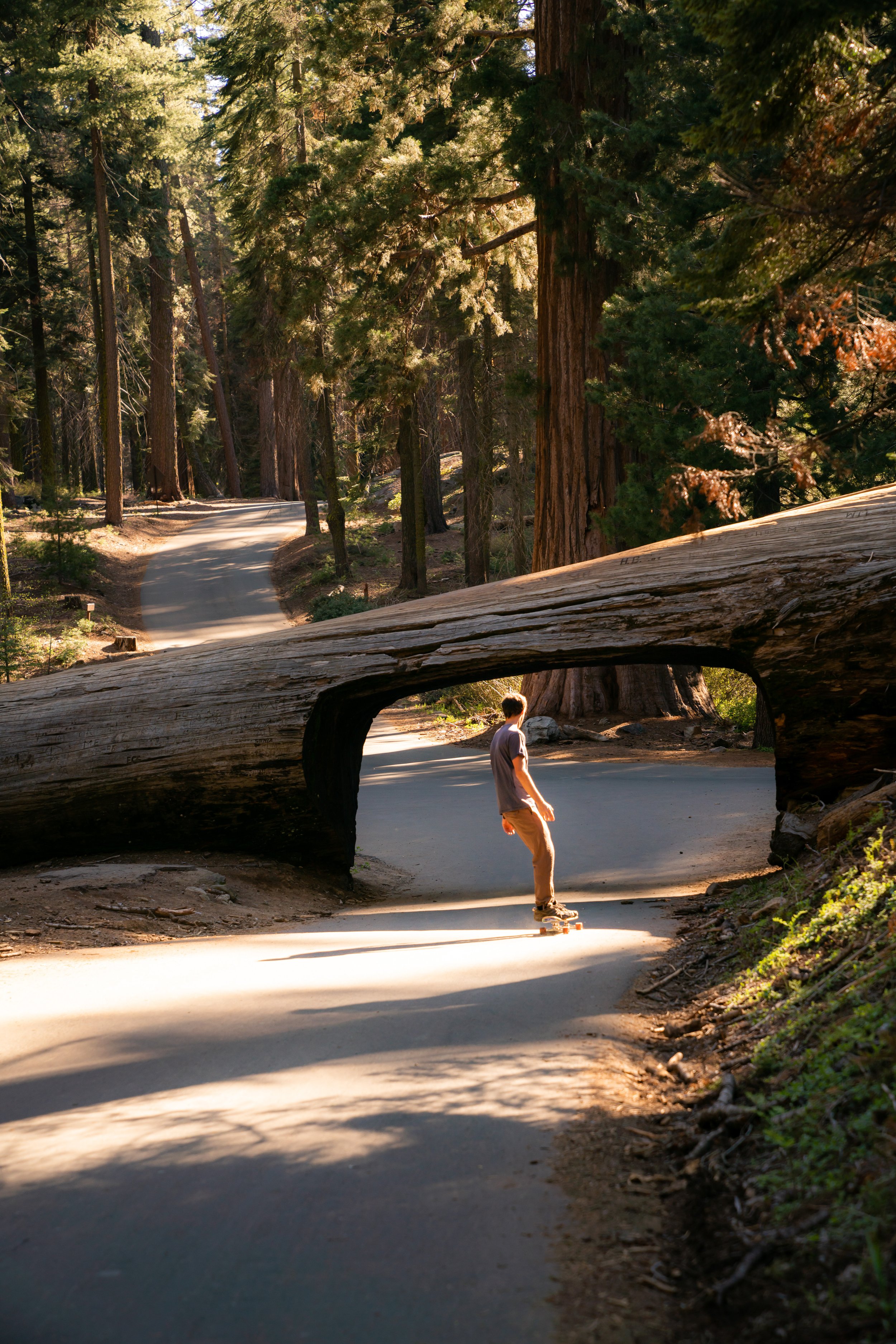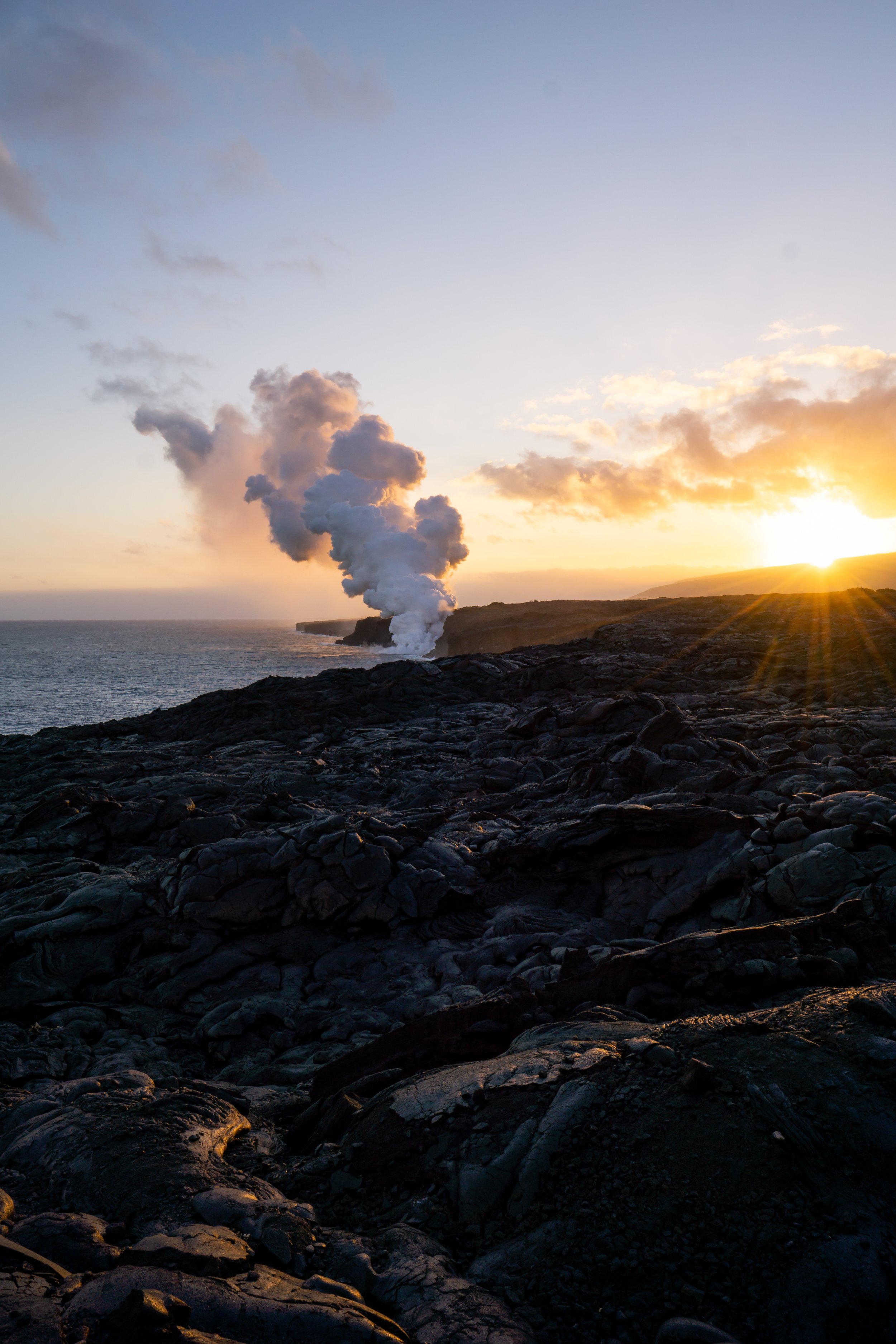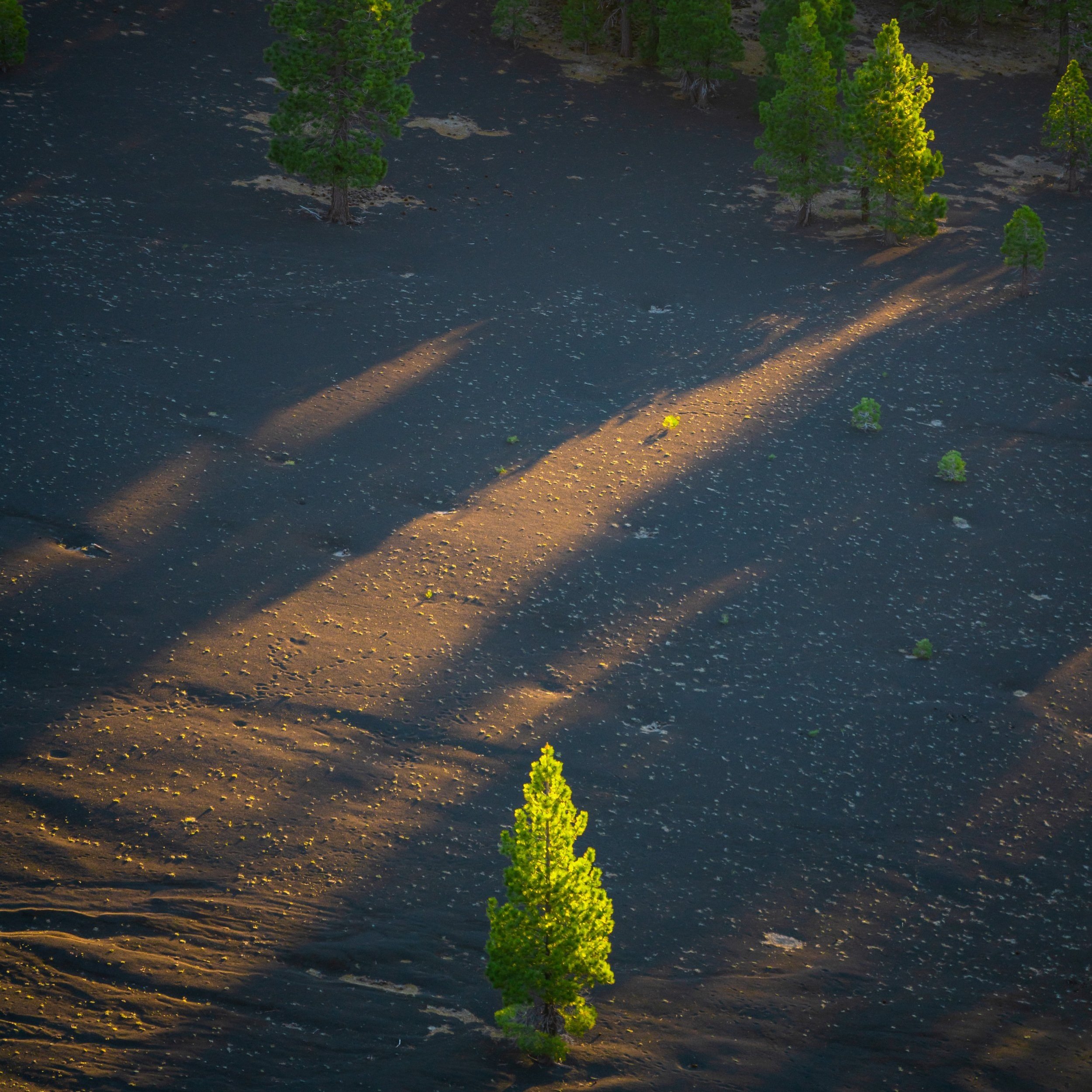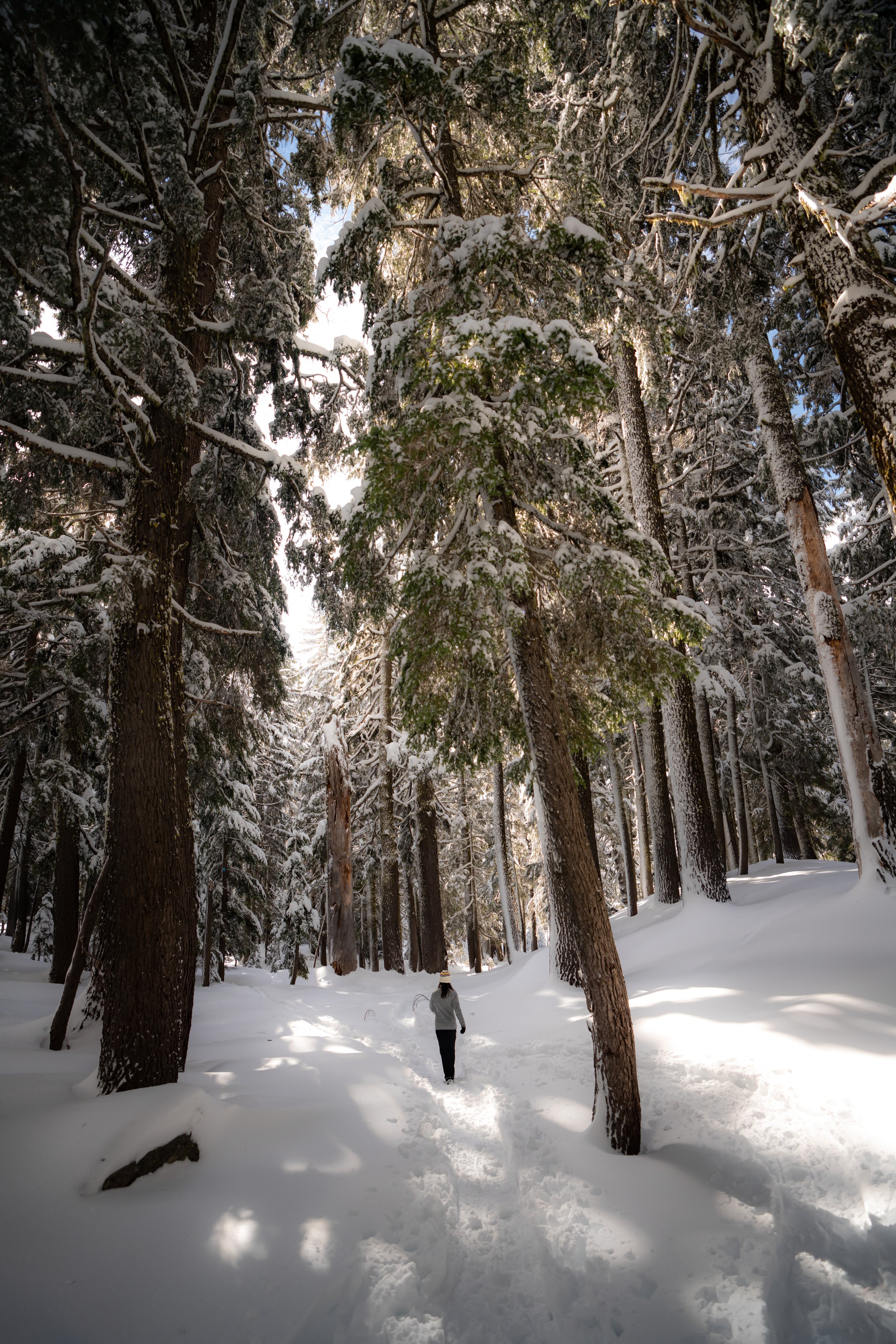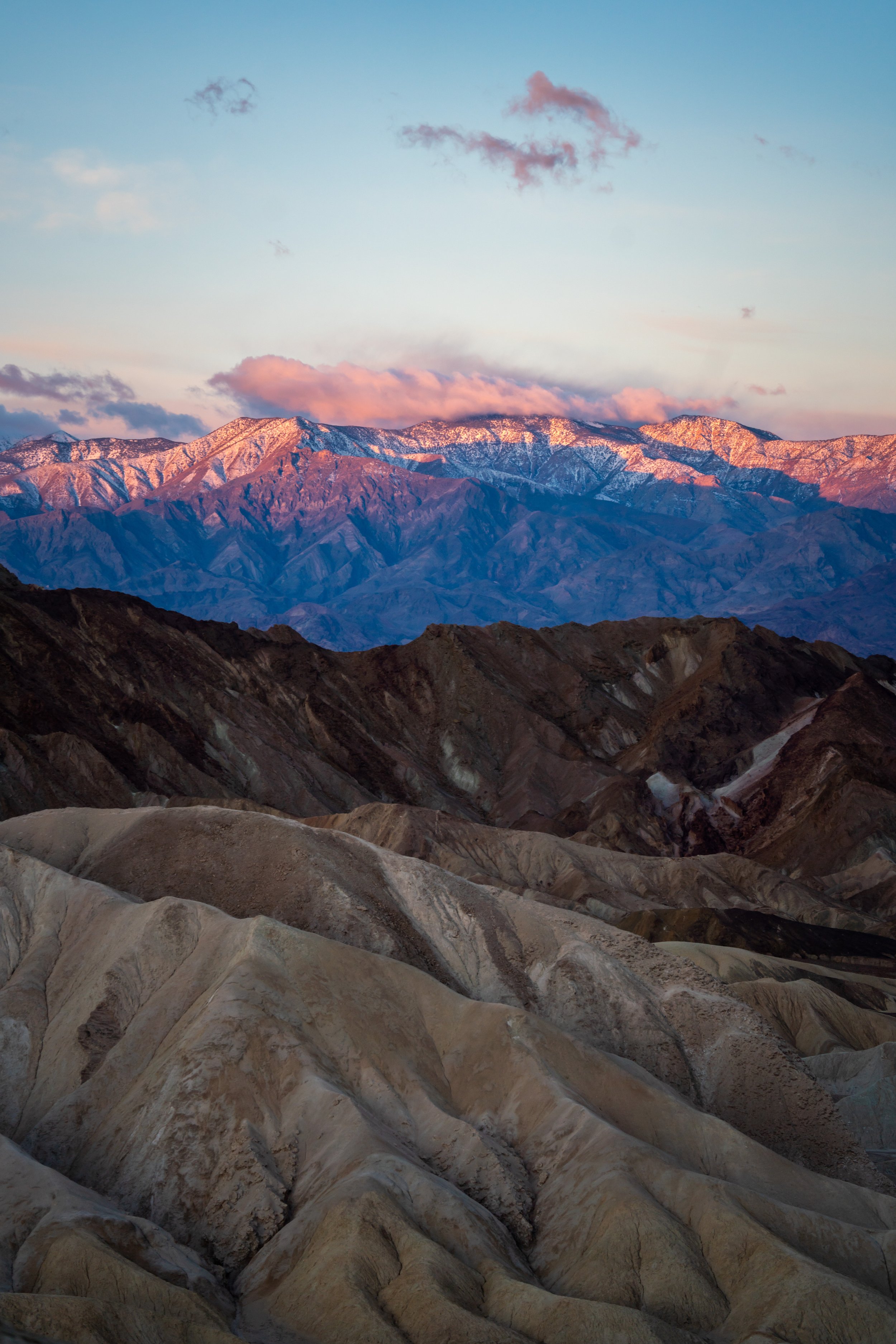Hiking Saint Sauveur Mountain via Ledge Trail in Acadia National Park
Distance (Ledge Trail & Loop): 2.5 miles / 4.0 km
Saint Sauveur Mountain in Acadia National Park is one of the park’s least-trafficked day hikes, much like Mansell Mountain on the other side of Long Pond.
That said, I personally see Saint Sauveur Mountain as a fun, underrated adventure that can make for a great sunrise hike, as all the best viewpoints along the upper loop face to the east!
In any case, Saint Sauveur Mountain is not often hiked in one straightforward manner, as there are four routes lead to the summit from all directions, with the most popular being the Ledge Trail.
This is exactly the direction in which this article is written, which includes the full loop past the summit of Saint Sauveur Mountain to Valley Peak beyond the summit.
What is Saint Sauveur Mountain Named After?
While Saint Sauveur might sound like the name of a religious figure, the name is actually derived from a 1613 Jesuit mission led by Father Pierre Biard on Mount Desert Island.
However, the mission was destroyed just a few weeks after its founding by an English raiding party from Virginia, led by Captain Samuel Argall.
Nevertheless, Saint Sauveur Mountain still bears the French name 'Saint Sauveur' to this day, which translates to 'Holy Savior,' a name that some speculate reflects religious beliefs or a desire for divine protection.
Saint Sauveur Mountain Trailhead Parking
Parking for Saint Sauveur Mountain via the Ledge Trail is located in a small hidden parking lot just off Highway 102, about 2.3 miles (3.7 km) north of Southwest Harbor. By 'hidden,' I mean that it can be easy to drive past, as it’s not as obvious as the parking area for Acadia Mountain, just to the north.
Remember to purchase your National Park pass in advance and display your pass or entrance receipt here and at every trailhead in Acadia National Park, whether you went through an official entrance station or not. Yes, law enforcement officers check parked cars throughout Acadia, and I have seen tickets handed out to vehicles not following the rules of a U.S. fee area.
On a different note, be aware that Acadia National Park is one of the busiest parks in the country, and finding a place to park, even at less-known trailheads, can be incredibly challenging during the busiest times of the year.
Google Maps Directions: Saint Sauveur Mountain Trailhead
Hiking Checklist - Acadia
Here is a complete list of must-have things that you will want for any hike in Acadia National Park.
Osprey 3L Water Bladder - The Osprey 3L water bladder is the most universal hiking and backpacking water bladder on the market, and it’s my go-to because of the slide-off seal that allows it to be quickly filled from the top. Additionally, individual parts are easily replaceable, such as the bite valve.
Blister / Heel Protectors - I swear by these cheap, amazing heel protectors to prevent blisters for nearly every kind of hiking and backpacking that I do!
Black Diamond Headlamp - Personally, I recommend the Black Diamond Storm because it is one of the brightest, lightest, and longest-lasting headlamps on the market—and trust me, the weight-to-battery-life ratio really does matter!
Hiking / Trail Running Shoes - Depending on the type of trail, I prefer to use either the Keen Targhee for longer, more rugged hiking or the HOKA Zinal Trail-Running Shoe for lighter, less intense trails. In either case, both have been amazing to me for many years across countless environments, and both can be found in men’s and women’s sizes. - (Men’s Keen / Women’s Keen) (Men’s HOKA / Women’s HOKA)
Waterproof Rain Shell - You never know when it may rain, and I’ve learned over the years that a rain shell is far better than a rain jacket. By this, I mean that it’s best to have something that the water will roll right off of, which is why I recommend the Patagonia Torrentshell 3L available in both men’s and women’s sizes.
High SPF Sunscreen - Packing high-SPF sunscreen is a must for long days outside!
Hiking the Ledge Trail to Saint Sauveur Mountain
The Ledge Trail to Saint Sauveur Mountain begins climbing almost immediately after the trailhead, gaining roughly 470 ft. (143 m) from here to the summit.
These are the 'ledges' for which the trail is aptly named.
I think it’s important to note that because the Ledge Trail is the most direct route to Saint Sauveur Mountain, it is also the steepest.
For this reason, some hikers may prefer to carry trekking poles for the uneven granite terrain, which can be especially useful on the steep hike back down!
As the Ledge Trail approaches the junction with the Saint Sauveur Mountain Trail, the elevation gain begins to level off from the initial steep sections.
Ledge-Saint Sauveur Mountain Junction
After roughly 0.5 miles (0.8 km), the Ledge Trail ends where it meets the Saint Sauveur Mountain Trail, which branches off the Acadia Mountain Trail just to the north (left).
That being said, go right at this junction to begin the Saint Sauveur Mountain Trail to the summit, about 0.2 miles (0.3 km) away.
Saint Sauveur Mountain
The summit of Saint Sauveur Mountain is located just before the start of the loop between Saint Sauveur and Valley Peak.
While there are no views at the 679-ft. (207 m) summit, I highly recommend continuing further to begin the loop, as the best viewpoint on the entire trail is only 0.2 miles (0.3 km) from the top.
Saint Sauveur Mountain Loop Trail
The Saint Sauveur Mountain Loop Trail, also called the Valley Peak Loop Trail, is a 0.9-mile (1.4 km) loop that runs across the top of the mountain between Saint Sauveur and Valley Peak.
That said, it truly makes no difference in terms of distance to reach Valley Peak on the far side. However, if you’re most interested in hiking to the best viewpoint first, go left in the clockwise direction.
This is the direction that I chose to hike.
North Saint Sauveur Mountain Loop-Valley Peak Junction
Shortly after beginning the loop, the trail comes to a split with the Valley Peak Trail, which climbs from the Man O' War Trail at the base of Acadia Mountain to Saint Sauveur Mountain.
Here, I highly recommend going left to leave the loop, as the best viewpoint on the entire hike is located just a short distance ahead on the far side of the trees!
These views to the southeast look out toward Valley Cove, Flying Mountain, and Northeast Harbor beyond.
For those interested, this is where I recommend catching sunrise when the weather is clear!
Past the viewpoint, the loop continues for another 0.3 miles (0.5 km) to the summit of Valley Peak.
South Saint Sauveur Mountain Loop-Valley Peak Junction
The next time the Saint Sauveur Mountain Loop splits is when it meets the Valley Peak Trail, which ascends from the Valley Cove Trail off the Flying Mountain Loop.
Here, go right, and the summit of Valley Peak will be found almost immediately ahead.
Valley Peak
Valley Peak is the last named summit on the Saint Sauveur Mountain Loop, which stands at 505 ft. (154 m), according to the National Park Service.
This is a bit shorter than Saint Sauveur Mountain, but the hike back up to the Ledge Trail is hardly noticeable compared to the initial steep ascent following the trailhead.
Saint Sauveur Mountain Loop Junction
After just 0.4 miles (0.6 km), the Saint Sauveur Mountain Loop returns to the beginning, with the trail back down located to the right.
Overall, the Ledge Trail to Saint Sauveur Mountain and Valley Peak is my favorite route to the summit loop, and remember, Saint Sauveur Mountain can make for a great sunrise adventure, as the best viewpoint is only 0.9 miles (1.4 km) from the Ledge Trailhead.
This is why I continually say throughout my Acadia articles to travel to the park with a good headlamp, as there are seemingly countless hikes that make for great, uncrowded sunrise and sunset adventures, apart from the popular trails, like Beehive and Precipice.
More Acadia Adventures
If you’re interested in reading about some more amazing adventures within Acadia National Park, check out my separate posts below!
Mount Desert Island
Schoodic Peninsula
Best Way to Find Places to Stay!
Wherever I travel, I love to start my search for places to stay on VRBO.
Even if I don’t end up booking through them, I think it’s one of the best ways to see what’s in the area!
Best Way to Book Rental Cars!
I travel quite a bit, and I know firsthand that finding a good rental car deal can be a challenge, but that’s why I recommend comparing all of your options with Discover Cars.
In short, Discover Cars is a well-known, reputable business that allows you to search for the best deal across companies, and they have the best full-refund cancellation policy I’ve ever seen, valid up to 72, or sometimes even 48, hours prior to your reservation!
Book Here: Discover Cars
Safety
The biggest risks that the National Park Service highlights in Acadia National Park are largely associated with falls, whether on slippery, wet granite or down one of the countless dramatic cliffs found throughout the park.
This is true both in coastal areas and on unsuspecting upper-elevation trails—not just on well-known challenging hikes, like the Precipice and Beehive Trail.
That being said, prepare for all types of conditions, as New Englanders will tell you that layers are your best friend in Maine—especially on the Atlantic Coast!
Apart from this, be aware that there are Black Bears in Acadia National Park, though the National Park Service reports that encounters are very unlikely. Even so, hiking with bear spray is never a bad idea, regardless that Black Bears usually present less of a risk compared to Grizzlies. However, it’s truly up to your own discretion and comfort level.
As always, find the most up-to-date information and conditions on the official National Park website.
National Park Service: Acadia National Park
U.S. National Parks Pass
Did you know that the same America the Beautiful Pass that grants access to all 63 U.S. National Parks can be purchased in advance at REI?
Yes, you can save time when you arrive by purchasing your National Park pass, along with your other outdoor gear, at REI before traveling to the park!
More U.S. National Parks
If you’d like to read more about some of my best recommendations when visiting other U.S. National Parks, check out some of my other posts below!
Disclaimer
All information provided on this blog is for informational purposes only and is not intended to be a substitute for information or advice from qualified professionals or managing agencies.
Noah Lang Photography LLC makes no representations or warranties regarding the accuracy or completeness of the information provided here, and readers should use their own discretion, judgement, and seek professional advice where it is appropriate.
Furthermore, Noah Lang Photography LLC shall not be held responsible for any injuries, lost individuals, or legal issues arising from the use of information provided on this website, and if applicable, the above safety disclaimer should be referenced to provide a generic overview of the risks involved.
All said, the content on this blog is for the sole use of Noah Lang Photography LLC, and unauthorized use or reproduction of this content is strictly prohibited.
Disclosure
This post is not sponsored.
However, some of the links in this post are affiliate links, which means that I may earn a small commission if a purchase is made through one of those links. This commission comes at no additional cost to you, and I only recommend products that I personally use and believe will add value to my readers. Thank you for your support, which enables me to continue creating more!
To read the full privacy policy, click here.

About This Blog
Noah Lang Photography, also known as @noahawaii, is 100% reader-supported!
I do not accept guest articles or sponsored content of any kind on my blog, which is why, if you enjoy the outdoor and travel content I create, please consider buying me a coffee!
I appreciate your support, which helps me continue to keep this blog alive!













































